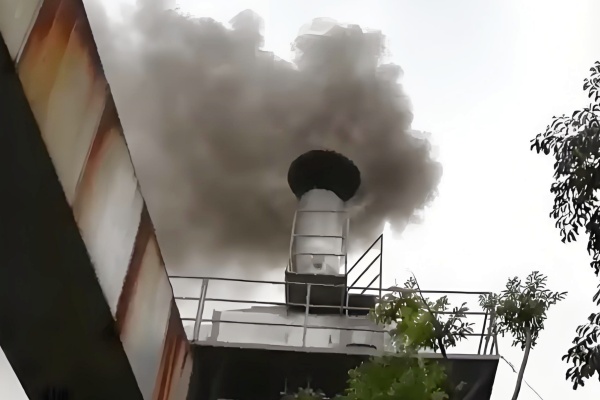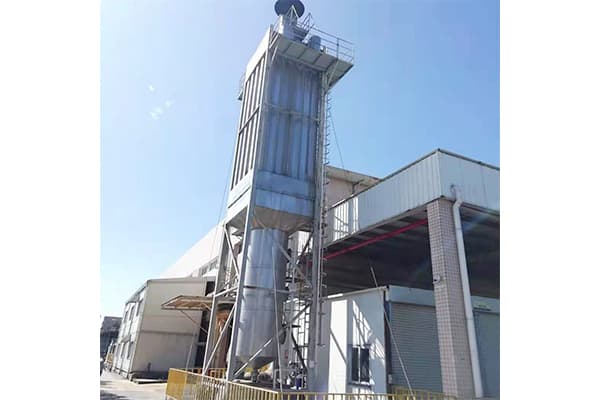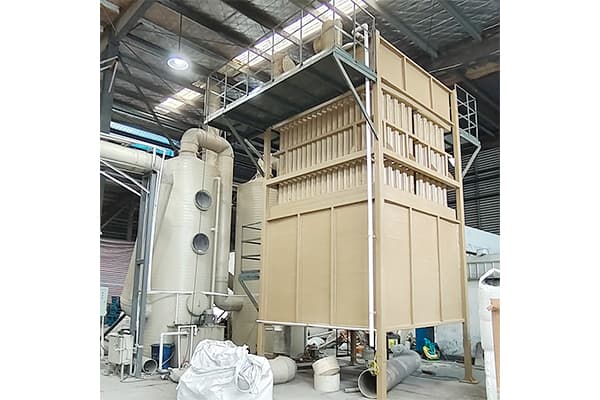Effective Purification of Drying Flue Gas with Wet Electrostatic Precipitators
Industrial drying processes—such as in food processing, textiles, or biomass treatment—generate flue gases laden with fine particulate matter (PM), oily mists, and volatile organic compounds (VOCs). These emissions pose environmental and operational challenges, necessitating advanced control technologies. Wet electrostatic precipitators (WESP) offer a robust solution, leveraging unique advantages to handle high-humidity, sticky, and complex drying emissions. This article explores WESP’s key benefits for drying flue gas treatment, supported by technical insights and compliance considerations. Key Advantages of WESP for Drying Applications 1. High Efficiency for Fine Particles and Oily Mists WESP excels in capturing sub-micron particles (e.g., PM2.5) and oily aerosols prevalent in drying exhausts. By charging particles electrostatically and trapping them on water-washed collection surfaces, it achieves removal rates exceeding 99% for fine PM and oily mists [[4]()][[5]()]. This efficiency helps facilities meet stringent standards (e.g., <10 mg/m³ emissions) without secondary dust release [[8]()][[12]()]. 2. Adaptability to High Humidity and Sticky Contaminants Drying gases often contain moisture, vapors, and adhesive residues that clog conventional filters. WESP’s continuous water film prevents fouling by washing collected residues into sludge, ensuring stable operation in humid conditions [[6]()][[9]()]. Its corrosion-resistant materials (e.g., stainless steel or FRP) further enhance durability against acidic or organic components [[3]()][[11]()]. 3. Integrated Pollution Control Beyond particles, WESP removes soluble gases (e.g., VOCs) and aerosols through chemical reactions in the water layer. This eliminates the need for multi-stage systems, simplifying workflows in industries like food drying or textile processing [[4]()][[10]()]. 4. Operational Economy and Low Maintenance With no moving parts and automated water-based cleaning, WESP reduces downtime and maintenance costs compared to bag filters or dry ESPs [[5]()][[7]()]. Its compact design (e.g., honeycomb structure) also minimizes footprint, ideal for retrofitting existing facilities [[6]()][[8]()]. 5. Compliance and Sustainability Benefits By enabling ultra-low emissions, WESP supports adherence to global regulations (e.g., EPA standards) while recovering water resources through closed-loop systems. This aligns with circular economy goals and reduces wastewater burdens [[9]()][[12]()]. Implementation Considerations While WESP offers significant benefits, its water-sludge handling requires proper treatment infrastructure [[11]()]. Pilot testing is recommended for gas-specific optimization, particularly for variable VOC loads or extreme temperatures. Conclusion Wet electrostatic precipitators provide a versatile, efficient solution for drying flue gas purification, addressing fine particles, humidity, and complex pollutants. Their reliability and low operational costs make them a strategic choice for industries prioritizing sustainability and compliance. For SEO, this content integrates keywords like "drying flue gas treatment," "WESP efficiency," and "oily mist control" while maintaining factual accuracy to avoid overstatement.
 How Wet Electrostatic Precipit
How Wet Electrostatic Precipit
 Wet Electrostatic Precipitato
Wet Electrostatic Precipitato
 Effective Purification of Dryi
Effective Purification of Dryi
 Effective Treatment of Metal
Effective Treatment of Metal


